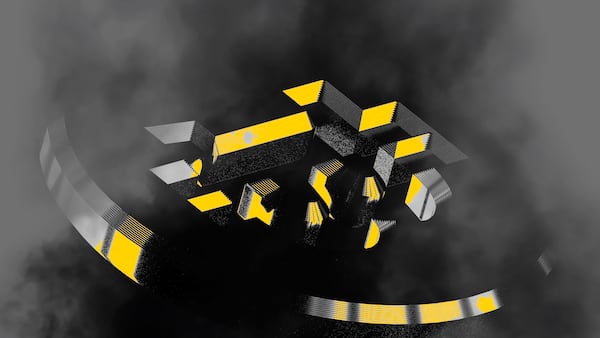- Wall Street can’t use DeFi protocols without knowing who their counterparty is.
- That will lead to more protocols implementing identification checks.
- A new hybrid model — partially centralised, partially decentralised — may emerge.
Wall Street is wading into crypto. And that will probably mean the end of DeFi as we know it.
“A lot of institutions are actually fascinated by DeFi,” Vertex co-founder Darius Tabai told DL News. “The problem is that DeFi is still in Wild West mode.”
DeFi enables anyone, anywhere to perform complex financial transactions — for example, taking a loan out on Ethereum through the lending protocol MakerDAO — without needing to submit identification.
And because these protocols are lines of code rather than companies with an office, there’s no one to send that identification to anyway.
That’s a big problem on Wall Street, where firms are legally obligated to assess counterparty risk — knowing who’s on the other side of the transaction.
A former global head of metals trading at Merrill Lynch and Credit Suisse, Tabai said that most institutions wouldn’t be able to use protocols that don’t require identification.
The solution?
“It’s been clear to people for a while that there will be a next generation of DeFi platforms that are permissioned in some way or other,” he said.
Hybrid models
Crypto projects generally belong to one of two categories: centralised or decentralised.
Centralised platforms, like Binance or Circle, are run like companies and require identity checks.
But decentralised protocols, like Uniswap or Tornado Cash, are open-source software programmes steered by their communities — at least in theory — that anyone can use without providing information about themselves.
These two categories will likely converge into one hybrid that takes advantage of the security provided by blockchain technology while retaining the efficiency and identity checks of centralised models, Tabai said.
Case in point: Vertex, a perpetuals exchange that he co-founded, executes trades offchain, like a centralised firm, but records all transactions onchain, like a decentralised protocol.
And while it doesn’t yet have KYC, or know-your-customer checks, the team uses third-party monitoring services like Chainanalysis to flag high-risk wallet addresses.
Vertex isn’t the only protocol organising itself that way.
Cube.exchange, a trading platform launched in December, has already implemented KYC checks. But users can track where their funds are in real time — just like when they use a decentralised platform.
Cube’s hybrid design prevents the team from misappropriating customer funds, or hackers from syphoning them away.
These issues have plagued crypto since Mt. Gox’s demise in 2014, and they came back to the fore when FTX collapsed in 2022.
“Hybrid models solve for a number of the problems that have provided easy fodder for critics, and offer a far superior experience to both centralised and decentralised exchanges,” Cube co-founder and CEO Bartosz Lipiński told DL News.
Evolution
For Tabai, this model is only going to become more widespread.
“Some of the standards from TradFi will start to move into crypto,” he said. That includes KYC checks, which Tabai said weren’t ubiquitous even five years ago.
“Now, all centralised exchanges do these checks,” Tabai said. “It makes sense that at some level, DeFi will probably do the same.”
Lipiński, meanwhile, said that “many” decentralised exchanges already perform identification checks to comply with anti-money-laundering rules.
And that might be enough for Wall Street to begin using these platforms once the regulatory uncertainty around crypto lifts, he said.
“It’s not a new idea,” Tabai said. “It’s just an idea that’s being refreshed.”
Tom Carreras is a markets correspondent for DL News. Got a tip about Wall Street and DeFi? Reach out at tcarreras@dlnews.com



